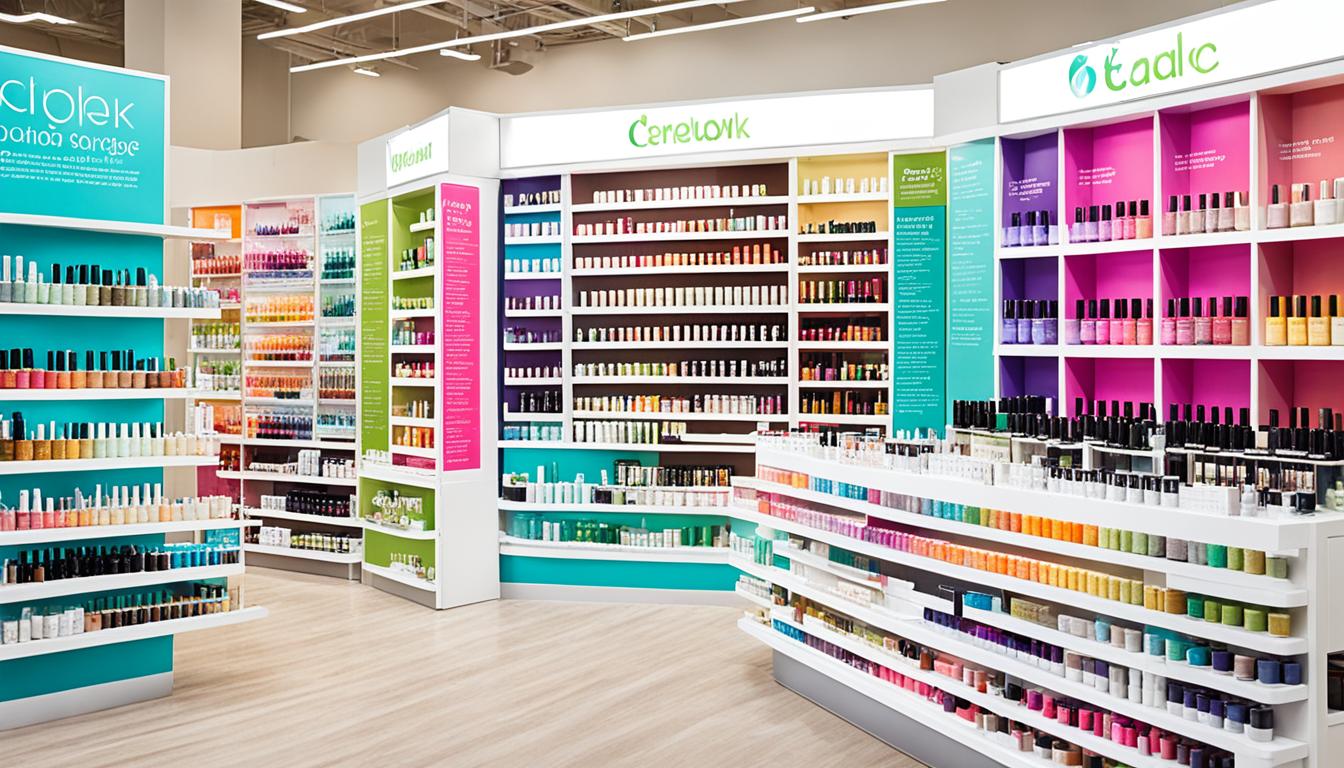Frooti, a subsidiary of Parle Agro Pvt. Ltd, has emerged as a leading beverage brand in India through its innovative marketing strategies. In this case study, we will explore the key elements that have contributed to Frooti’s success, including its brand positioning and advertising campaigns.
Since its inception in 1984, Frooti has managed to capture the hearts of consumers with its unique approach to marketing. The brand revolutionized the Indian market by introducing the concept of tetra packs, providing convenient and on-the-go mango-flavored refreshment.
One of the standout features of Frooti’s marketing strategy is its emphasis on brand positioning. By targeting a wide range of consumers, from children to adults, Frooti has effectively carved a niche for itself in the competitive beverage industry.
Furthermore, Frooti has successfully utilized celebrity endorsements to enhance its brand image and connect with a broader audience. By partnering with popular personalities, Frooti has been able to establish a strong emotional connection with consumers, reinforcing its position as a go-to mango beverage.
As we delve deeper into Frooti’s journey, we will also explore the company’s diversification efforts. Parle Agro Pvt. Ltd, the parent company, expanded its product portfolio to include carbonated apple-based drinks like Appy Fizz and packaged drinking water with Bailley. This strategic move allowed the company to tap into new markets and reduce its reliance on Frooti.
In conclusion, Frooti’s success can be attributed to its innovative marketing strategies, strong brand positioning, and effective use of celebrity endorsements. By continuously evolving and diversifying its product offerings, Frooti has managed to stay competitive in the ever-changing beverage industry.
Key Takeaways:
- Frooti’s success can be attributed to its innovative marketing strategies.
- The brand’s effective brand positioning has helped it appeal to consumers of all ages.
- Celebrity endorsements have played a crucial role in enhancing Frooti’s brand image.
- Parle Agro’s diversification efforts have allowed the company to explore new markets.
- Continued innovation and product diversification are essential for Frooti’s future growth.
Historical Background of Parle Group and Frooti’s Launch
The story of Frooti’s success begins with the renowned Parle Group, which was founded in 1929. Initially known for its bakery products, the group expanded its operations and ventured into biscuit manufacturing, where it achieved great success with the iconic ‘Parle G’ in 1939. Building on their expertise, Parle Agro Pvt. Ltd, a subsidiary of Parle Group, introduced Frooti to the Indian market in 1984.
What set Frooti apart right from the start was its innovative use of TETRA PACK packaging, a groundbreaking concept in India at the time. This sleek packaging, combined with the delicious taste of the mango-flavored beverage, quickly captivated consumers and positioned Frooti as a unique and exciting offering in the market.
Nadia Chauhan’s Marketing Revolution
In 2003, Nadia Chauhan took the reins as the Chief Marketing Officer (CMO) of Parle Agro, and under her leadership, Frooti underwent a remarkable marketing revolution. Chauhan spearheaded a rebranding strategy that breathed new life into the iconic mango-flavored beverage.
One of the significant changes implemented by Chauhan was a bold shift in Frooti’s packaging color. The brand’s packaging was transformed from its original green color to a vibrant and eye-catching yellow, instantly making it stand out on store shelves. This strategic move not only captured consumer attention but also signaled a fresh and exciting transformation for the brand.
Another crucial step in this marketing revolution was the introduction of a pocket-friendly INR 2.5 pack. This affordable pricing strategy made Frooti more accessible to a wider audience, thus expanding its market reach and making it a go-to refreshment choice for the masses.
Celebrity endorsements were another powerful tool utilized by Chauhan during Frooti’s rebranding. By collaborating with well-known Bollywood celebrities, Frooti enhanced its appeal and connected with consumers on a deeper level. The influence of these endorsements extended Frooti’s reach and positioned it as a trendy and aspirational brand that transcended age groups.
This marketing revolution orchestrated by Nadia Chauhan breathed new energy into Frooti, propelling it to greater heights. The brand’s rebranding, affordable pricing, and celebrity endorsements not only repositioned Frooti as a contemporary and dynamic beverage but also widened its consumer base.
With Nadia Chauhan at the helm, Frooti’s marketing revolution became a testament to the power of strategic brand transformation and innovative marketing tactics. The rebranded Frooti emerged as an irresistible choice for consumers, solidifying its position in the competitive beverage market.
Diversification and Market Expansion
To reduce dependency on Frooti and further expand its product portfolio, Parle Agro ventured into diversification. This diversification included the introduction of Appy Fizz, a carbonated apple-based drink, and Bailley packaged drinking water. These strategic moves allowed Parle Agro to explore new markets and achieve a more balanced product portfolio.
Parle Agro recognized the need to spread its wings beyond Frooti and tap into new opportunities. By launching Appy Fizz, a refreshing carbonated drink with a unique apple flavor, they captured the attention of consumers looking for a tangy twist.
- Appy Fizz quickly gained popularity as a trendy beverage that catered to the youth and became a favorite choice for those seeking a fizzy and fruity experience.
- With its captivating advertising campaigns and innovative packaging, Appy Fizz carved a niche for itself in the market, establishing a strong brand presence.
- The introduction of Bailley packaged drinking water further diversified Parle Agro’s product offerings, tapping into the growing demand for safe and hygienic packaged drinking water.
- Bailley provided consumers with a reliable and trustworthy option, ensuring their hydration needs were met with the highest quality standards.
This strategic diversification enabled Parle Agro to cater to different consumer preferences and expand its reach across various segments of the beverage industry. Appy Fizz and Bailley packaged drinking water complemented Frooti’s success, further reinforcing Parle Agro’s position as a leading player in the market.
| Product | Key Features | Audience |
|---|---|---|
| Appy Fizz | Carbonated apple-based drink | Youthful, trendy consumers |
| Bailley Packaged Drinking Water | Safe and hygienic packaged drinking water | All consumer segments |
This diversification strategy not only reduced the dependency on Frooti but also broadened Parle Agro’s reach and market share. By tapping into new market segments, Parle Agro strengthened its brand presence and solidified its position as a key player in the beverage industry.
Lessons Learned and Business Insights
Frooti’s success can be attributed to several key factors that have contributed to its market appeal and sustained growth. By analyzing these success factors, valuable business insights can be gained for companies operating in the beverage industry.
Innovative Packaging: A Game-Changer
One of the critical success factors for Frooti has been its early adoption of innovative packaging solutions, particularly the introduction of TETRA PACK. This packaging revolutionized the beverage industry in India, offering convenience, portability, and longer shelf life. By leveraging innovative packaging, Frooti created a strong differentiating factor, attracting consumers on the basis of both functionality and visual appeal.
Adapting to a Changing Audience
Frooti’s ability to adapt its brand image and appeal to different demographic segments has been a key driver of its success. Initially positioned as a children’s drink, the brand recognized the need to appeal to a broader market. This led to a shift in the brand’s messaging and marketing campaigns, positioning Frooti as a beverage suitable for all ages. Celebrity endorsements played a significant role in this transformation, helping to shape Frooti’s image and appeal to a wider audience.
Diversification and Targeting Market Segments
A valuable lesson learned from Frooti’s marketing journey is the importance of diversification and target market segmentation. By diversifying its product portfolio, Frooti mitigated the risk of over-reliance on a single product and expanded its reach in the market. This diversification included the introduction of Appy Fizz, a carbonated apple-based drink, and Bailley packaged drinking water, catering to different consumer needs and preferences. By identifying and targeting specific market segments, Frooti was able to tap into new opportunities and maximize its market potential.
In summary, Frooti’s success can be attributed to innovative packaging, the ability to adapt to changing consumer preferences, and strategic diversification. These lessons provide valuable insights for businesses looking to make a mark in the competitive beverage industry.
| Success Factors | Insights |
|---|---|
| Innovative Packaging | Adopting innovative packaging solutions can be a game-changer. It differentiates a product from competitors and offers added value to consumers. |
| Adapting to a Changing Audience | Recognizing the evolving needs and preferences of the target audience is crucial. Adapting brand messaging and marketing strategies accordingly to resonate with consumers is key. |
| Diversification and Targeting Market Segments | Diversifying the product portfolio and targeting specific market segments helps reduce reliance on a single product and expands market reach. |
About Frooti
Frooti is a popular mango-flavored beverage available in India. Launched in 1985, it quickly gained recognition for being one of the first on-the-go drinks offered in tetra packs. Made with fresh mango pulp, Frooti is renowned for its rich and refreshing flavor that captivates taste buds.
Over the years, Frooti has continued to innovate and expand its product range to cater to different customer preferences. In addition to its classic mango-flavored variant, Frooti now offers smaller packs that are convenient for individual consumption. The brand has also introduced fun and attractive animal-shaped bottles to engage younger consumers.
Frooti’s commitment to delivering a delicious and convenient beverage experience has made it a household name in India. With its iconic tetra pack packaging and delectable mango taste, Frooti continues to be a top choice for mango lovers across the country.
SWOT Analysis of Frooti
Conducting a SWOT analysis of Frooti provides valuable insights into the brand’s current position in the market. By assessing its strengths, weaknesses, opportunities, and threats, Frooti can strategize effectively to maximize its potential and address any challenges it may face.
Strengths
- Frooti has successfully positioned itself as a convenient on-the-go drink, catering to the fast-paced lifestyle of consumers.
- The brand has built a strong and recognizable image over the years, gaining trust and loyalty from its target audience.
Weaknesses
- Frooti’s product range is relatively limited, primarily focusing on its flagship mango-flavored beverage, which may restrict its market reach.
- The brand has faced compliance issues in the past, which can impact its reputation and consumer perception.
Opportunities
- Increasing health awareness among consumers provides an opportunity for Frooti to introduce healthier variants and expand its product line.
- The brand can explore new flavors and diversify its offerings to cater to evolving consumer preferences and capture a larger market share.
Threats
- Frooti faces competition from other players in the mango-flavored beverage segment, including Slice, Maaza, and Tropicana. The brand needs to differentiate itself and stay ahead to maintain its market position.
- The unorganized market poses a threat, as local vendors may offer similar products at lower prices, impacting Frooti’s market share.
A SWOT analysis helps Frooti understand its strengths, weaknesses, opportunities, and threats, enabling the brand to formulate effective strategies that leverage its competitive advantages and mitigate potential risks. By capitalizing on its strengths, overcoming weaknesses, exploring opportunities, and addressing threats, Frooti can continue to thrive in the beverage market.
Competitive Analysis of Frooti
Frooti faces strong competition in the non-carbonated mango-flavored segment from established brands such as Slice, Maaza, and Tropicana. These competitors have a significant presence in the market and offer their unique selling propositions to attract consumers.
However, Frooti has successfully maintained its position by leveraging its distinctive taste and diverse packaging options. With its rich flavor made from fresh mango pulp, Frooti has captured the taste buds of millions of consumers.
While these competitors pose a challenge, Frooti also faces competition from local vendors and other juice-based drinks that target the same consumer segment.
To stay competitive, Frooti should focus on diversifying its product offerings to cater to different consumer preferences. By introducing new flavors, sizes, and packaging innovations, Frooti can further enhance its market presence and attract a broader consumer base.
Moreover, maintaining brand loyalty and consistently delivering on its promise of quality and taste will be critical for Frooti’s long-term success in the face of intense competition.
Competitor Comparison
| Brand | Distinctive Features | Market Position |
|---|---|---|
| Slice | – Offers a blend of real mangoes and a unique pulpy texture. – Positions itself as a premium indulgence mango drink. – Emphasizes on exotic flavors and sensory experiences. |
One of the leading mango drink brands in India, recognized for its premium and indulgent image. |
| Maaza | – Made from carefully selected Alphonso mangoes. – Captures the essence of the ‘urban Indian’ lifestyle through its advertising campaigns. – Known for its refreshing taste and nostalgic appeal. |
A well-established brand with a loyal consumer base, focusing on the emotional connection with its consumers. |
| Tropicana | – Offers a range of fruit juices, including mango, with a focus on health and nutrition. – Uses 100% real fruit pulp and has a reputation for quality. – Targets health-conscious consumers. |
A prominent brand in the fruit juice category, known for its emphasis on health and wellness. |
In the fierce competition within the mango-flavored segment, Frooti has proven its resilience by maintaining its market presence and consumer loyalty. By closely monitoring the strategies and offerings of its competitors while continuously innovating and addressing evolving consumer needs, Frooti can stay ahead in this competitive landscape.
Conclusion
Frooti’s marketing strategy has been instrumental in its success, with a focus on innovation in packaging, strategic brand positioning, and expansion into new markets. By adopting TETRA PACK packaging early on, Frooti established itself as a unique and convenient on-the-go beverage.
To maintain its performance and fully capitalize on future growth opportunities, Frooti needs to continue diversifying its product range, leveraging emerging market trends, and staying a step ahead of competitors. This could include exploring new flavors, exploring healthier options, and targeting specific consumer segments.
Furthermore, Frooti should prioritize enhancing its digital presence and engaging with customers through social media platforms. By establishing a strong online presence, Frooti can attract and retain a loyal customer base, build brand equity, and drive long-term success.
In conclusion, Frooti’s journey from its launch to its current position as a leading mango-flavored beverage brand in India is a testament to the power of effective marketing strategies. By continually adapting to changing consumer preferences and market dynamics, Frooti is well-positioned to embrace future opportunities and remain a beloved choice for mango lovers across the nation.





